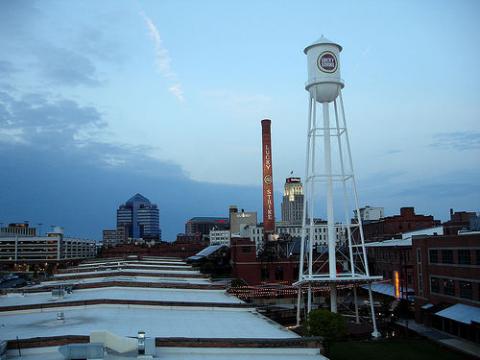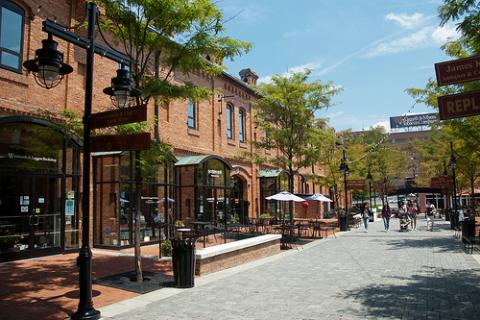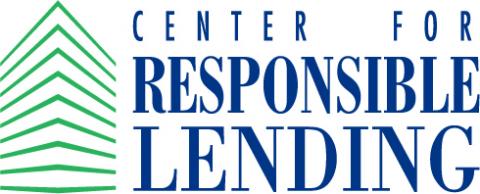Updated December 2018
Durham was once best known for its textile mills and tobacco factories, including the “Bull Durham Tobacco and Company” and “Duke & Sons.” However, in the late 1980s Durham hit hard times, marked by the closure of Erwin Mills (Burlington Industries) in 1986 and, just one year later, the American Tobacco factory.
Located in the Raleigh-Durham-Chapel Hill “Research Triangle” region of North Carolina—anchored by Duke University, the University of North Carolina, North Carolina Central University, and North Carolina State University in Raleigh— Durham has sought in recent years to reinvent itself as the “Medicine City.” Today, the city houses roughly 300 medical and health-related companies and medical practices with a combined payroll that exceeds $1.5 billion annually.
The Research Triangle region is home to over 1.5 million people. The city of Durham, like the rest of its surrounding region, has grown rapidly in recent years. According to Census estimates, in 2017 Durham’s population grew to 267,743 residents, an increase of 17 percent from 2010. Durham is now 48 percent white, 40 percent black, 5 percent Asian, and 3 percent two or more races. Roughly 14 percent of Durham's population identifies as Hispanic or Latino.
Despite the city’s growth, poverty remains a significant challenge. In fact, between 2000 and 2015—a period in which Durham’s downtown attracted $1.7 billion in public and private investments—the city’s poverty rate increased from 15 to 19 percent. Durham’s Hispanic and black residents fare considerably worse, with 32 and 24 percent, respectively, living below the poverty line, compared to just 8 percent of the city’s white residents. Homeownership also varies significantly by race: while nearly three-fourth of all white residents own homes, well under half of all Hispanic (43 percent) and black (46 percent) residents are homeowners. Moreover, housing affordability is a severe challenge with only 34 affordable units available for every 100 extremely low-income households.
Working to address these challenges are a range of community wealth building organizations and initiatives. For example, Durham Community Land Trustees (DCLT), catalyzed in 1987 by residents concerned with rising home prices, absentee landlords, and housing disrepair, builds, manages, and advocates for permanently affordable housing. The land trust now owns and manages 282 units that provide rental and homeownership opportunities to 325 low-income people. Another innovative organization is The Forest Foundation, which is creating green jobs by converting local restaurants’ waste oil into fuel for a green transportation business and using compostable matter from the collection to revitalize a brownfield site.
Moreover, many of the city’s anchor institutions are working to mitigate Durham’s socioeconomic challenges. For example, since 2007, Duke University has maintained $2.4 million in deposits with the Latino Community Credit Union (a Durham-based CDFI), helping thousands of credit union members obtain low-cost financial products. In July 2018, Duke increased its total deposits to $6 million, enabling 88 Durham first-time homebuyers to secure affordable mortgages. Duke also runs a supplier diversity program to increase its annual spend with local businesses that encounter obstacles to market entry, customer access, and financial growth.
An overview of community wealth building efforts follows:


